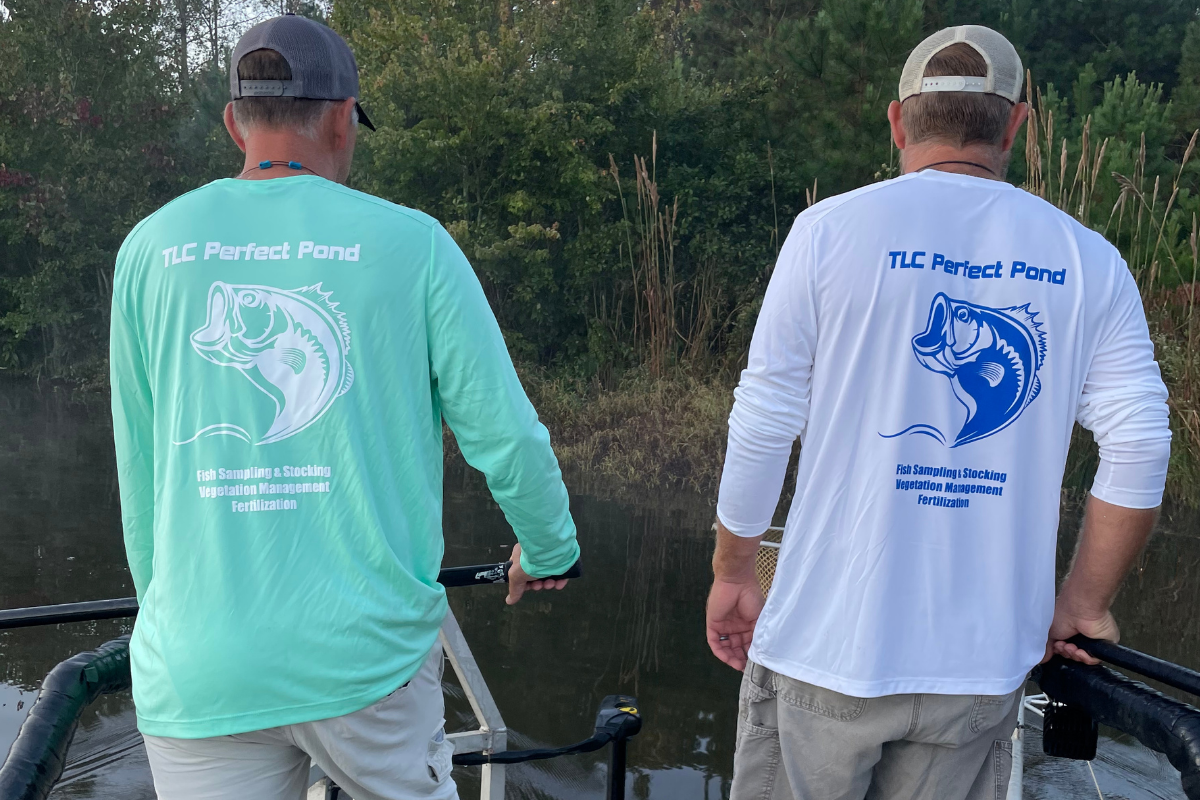Have you ever known a pond owner that made everyone catch and release every single largemouth bass they caught?
We all have.
This is actually a terrible management strategy for the long-term success of the bass population in a pond. Largemouth bass are at the top of the pond food chain and the larger fish don’t really have any predators besides people. As a result, they can quickly become overpopulated if they’re not managed properly.
According to the Virginia Department of Wildlife Resources, you should remove 10 lbs of largemouth bass per acre per year in an unfertilized pond. This would be a pond that’s not located near an agricultural source (farmland or livestock) and has not been supplemented with fertilizer. For a fertilized pond that is typically more productive, they recommend removing 35-40 lbs of bass per acre per year.
That can be a considerable amount of fish that need to be removed annually. For a healthy and fertilized 20 acre pond, that’s close to 800 lbs of fish that need to be removed per year. It takes a good bit of fishing to do that.
Many pond owners are concerned with the actual numbers of fish as opposed to the health of the fish in their pond. If you have too many bass and not enough resources for them to eat, the population will decline over time and the fish will be skinny. That’s why we recommend that every single pond we manage have a “catch and release” and “catch and remove” program in place.
Catch and Release Practices
So how do you know which fish to keep and which fish to catch and release? Below you’ll find a chart that includes the standard weights for largemouth bass of a given length. This is the ideal weight that a healthy bass of that length should have. If a largemouth bass has a weight over the standard weight, that is excellent. If a majority of the fish in a pond have weights that are significantly below the standard weight, there is cause for concern.
Largemouth Bass Standard Weight Chart

Using the information in this table above, you can set your own thresholds for the fish to keep and the fish to catch and release. You want to release the healthy fish that are near or above the standard weight for that length. And you’ll want to keep the unhealthy fish that are well-below the standard weight that they should have. Most biologists would suggest removing any fish that is below 80% of the standard weight listed above.
This will improve the overall genetics of the bass population in your pond over time. The fat and healthy fish will continue to reproduce while the skinny and unhealthy fish are removed so that they cannot reproduce any longer. As a result, you should grow more and more big, healthy bass as you keep the good ones and remove the bad ones.
How Do I Measure Each Fish?
Is it practical to require all people fishing your pond to weigh/measure each fish and cull or keep based on the table above? Probably not. But you could certainly do that if you prefer.
A healthy fish is pretty easy to identify. As our biologists like to say, healthy fish are shaped like a football. Their belly is broad and pronounced. An unhealthy fish will have practically no belly and will be flat on the underside. Using these signs, it’s pretty easy to distinguish between a healthy and unhealthy fish.
One idea would be to post a sign near the pond with a copy of the chart listed above. Another idea would be to have a simple “keep” and “cull” sign near the pond with a photo of a healthy fish alongside a photo of an unhealthy fish. This would help fisherman distinguish what fish they should keep and what to catch and release.
Large-Scale Fish Removal
The information above pertains to keeping healthy ponds in balance or correcting ponds that have a slight imbalance. In the case of a pond that has not been managed for years, there may be a need for a large-scale fish removal to correct the population dynamics in the pond. We frequently find the need for this in ponds that have no fishing pressure and have not been managed.
Our team of biologists will perform an electrofishing survey and remove the unhealthy fish that are contributing to the overpopulation problem. The fish are kept alive in a large live well on the electrofishing boat, then weighed and measured so that they can be compared to the standard weight for that length. If a fish is near the standard weight, we’ll safely return that one to the pond so it can continue to grow. If a fish is far below the standard weight, we’ll put it in a cooler so the pond owner can have a fish fry.


